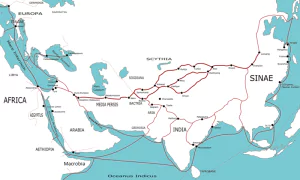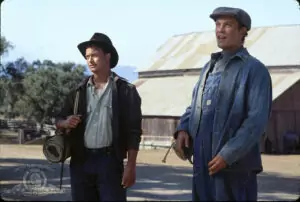 The Silk Road (114 BCE – 1450s CE) was an ancient system of trade routes that linked the East to the West. For several centuries, it was a prominent network that included both terrestrial and maritime routes. It stretched from East Asia, Southeast Asia, East Africa, West Africa, and Southern Europe. In order to explore its exact definition, history, and cultural significance, the following paragraphs will be written.
The Silk Road (114 BCE – 1450s CE) was an ancient system of trade routes that linked the East to the West. For several centuries, it was a prominent network that included both terrestrial and maritime routes. It stretched from East Asia, Southeast Asia, East Africa, West Africa, and Southern Europe. In order to explore its exact definition, history, and cultural significance, the following paragraphs will be written.

✅ AI Essay Writer ✅ AI Detector ✅ Plagchecker ✅ Paraphraser
✅ Summarizer ✅ Citation Generator
The Silk Road was not given its name for nothing. During its time of use, silk was a highly lucrative commodity along its routes. Silk, you can say, weaved together these many regions in terms of business and even cultural exchange. However, the name itself was not coined until the 19th century by Ferdinand von Richthofen. He made the term during his expeditions to China from 1868 to 1872. Despite this, the term was not made known to the academic world until the 20th century, when geographer Sven Hedin wrote a book titled “The Silk Road” in 1938. And finally, after the fall of the Soviet Union, academics in that region became involved increasingly in the study of the trade routes of Central Asia (“Silk Road in Rare Books”).
Though China is often referred to as the central hub of the Silk Road, the history of the network began in Persia. According to the Ancient History Encyclopedia, “The history of the Silk Road pre-dates the Han Dynasty in practice, however, as the Persian Royal Road, which would come to serve as one of the main arteries of the Silk Road, was established during the Achaemenid Empire (500-330 BCE). The Persian Royal Road ran from Susa, in north Persia (modern day Iran) to the Mediterranean Sea in Asia Minor (modern-day Turkey) and featured postal stations along the route with fresh horses for envoys to quickly deliver messages throughout the empire. The Persians maintained the Royal Road carefully and, in time, expanded it through smaller side roads” (Mark, Joshua J.). After Alexander the Great conquered the Persians, and the Han Dynasty used western horses to win wars against the nomadic tribe Xiongnu, the trade routes the Persians made were then employed by China under the auspices of Emperor Wu. Knowing that the empire had won their battles due to a superior western horse, China opened up for trade—desiring to see what else they could gain (Mark, Joshua J.). This was just the start of centuries of extensive trade between dozens of nations and empires, which attracted everyone from the Roman Empire, the Byzantine Empire, India, Mesopotamia, and other significant regions.
With all these areas joining in on trade, a cultural exchange was bound to happen. In fact, it is said that the first person to establish The Silk Road, General Zhang Qian, was on a diplomatic mission. According to UNESCO, “Cultural interaction was a vital aspect of material exchange. Moreover, many travelers ventured onto the Silk Roads in order to partake in this process of intellectual and cultural exchange that was taking place in cities along the routes. Knowledge about science, arts and literature, as well as crafts and technologies was shared across the Silk Roads, and in this way, languages, religions and cultures developed and influenced each other” (“Silk Roads Dialogue, Diversity & Development”). It can be said that the cultural exchange between nations was just as valuable as the trade of goods, or even more so. Establishing the Silk Road was one of the first steps towards globalization.
The cherished history of The Silk Road is one of global significance. Starting out as a Persian trading system of routes, after Persia fell under the might of Alexander the Great, China used parts of the original routes to bring grand cultural exchange and the trading of goods from far reaches of the East to the West to first benefit itself—later becoming advantageous for other nations. The Silk Route was used for about 500 years, and was perhaps the first large step towards globalization.
Works Cited
“Silk Road in Rare Books.” About Khiva | The Journey to Khiva, the World Heritage in Silk Road through Old Photographs, dsr.nii.ac.jp/rarebook/02/index.html.en.
Mark, Joshua J. “Silk Road.” Ancient History Encyclopedia, Ancient History Encyclopedia, 3 Dec. 2018, www.ancient.eu/Silk_Road/.
“Silk Roads Dialogue, Diversity & Development.” UNESCO, en.unesco.org/silkroad/about-silk-road.
Follow us on Reddit for more insights and updates.





Comments (0)
Welcome to A*Help comments!
We’re all about debate and discussion at A*Help.
We value the diverse opinions of users, so you may find points of view that you don’t agree with. And that’s cool. However, there are certain things we’re not OK with: attempts to manipulate our data in any way, for example, or the posting of discriminative, offensive, hateful, or disparaging material.